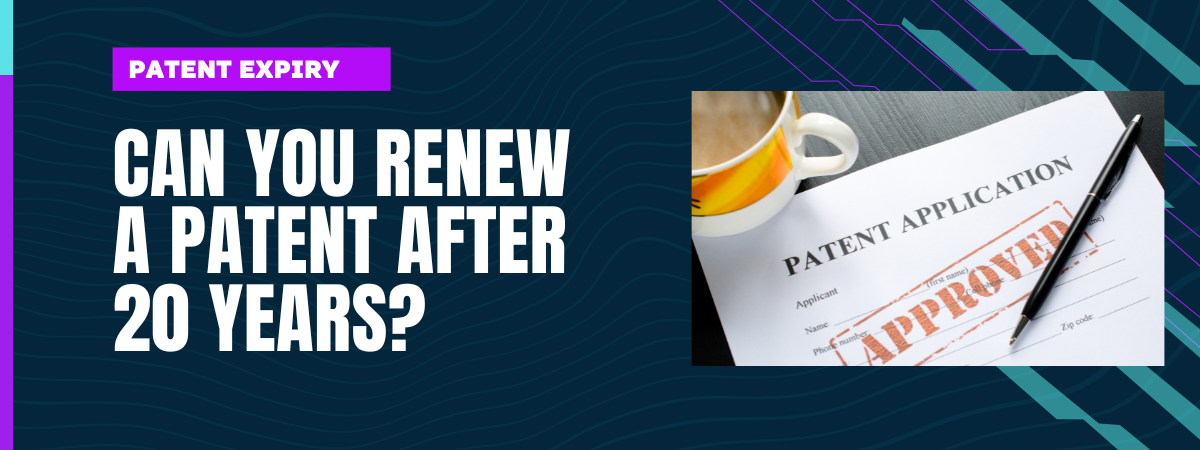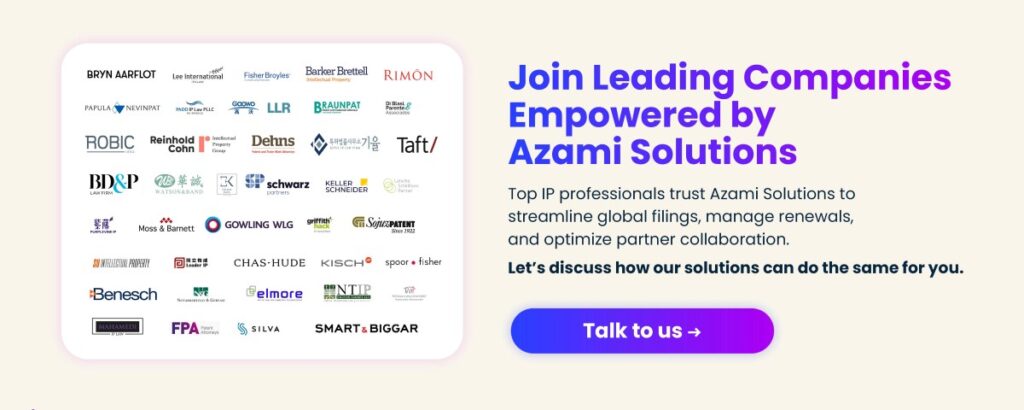For anyone managing intellectual property, knowing what happens when a patent expires is critical. Patents aren’t forever, and once they expire, the protected invention becomes available for public use. But does that mean the end of protection? Can a patent be renewed after 20 years? And does the answer change depending on the type of patent?
In this article, we explain what patent expiry really means, how to check a patent expiry date, and what options are available, if any, after a patent expires.
What Is Patent Expiry?
Patent expiry refers to the date when a patent’s legal protection ends. Once a patent expires, the invention is no longer protected by exclusive rights. That means anyone can make, use, or sell the invention without needing the patent owner’s permission.
Patent expiry can happen in one of two ways:
- Natural expiration after the full term (e.g., 20 years for utility patents)
- Early lapse due to missed maintenance payments
What Happens When a Patent Expires?
When a patent expires, several things can occur:
- The invention enters the public domain
- Competitors can legally produce and sell the patented product or process
- The patent holder loses rights to enforce the patent
- Opportunities open up to develop and use innovations based on the original invention
For patent owners, this can mean a loss of exclusivity and potential revenue—unless additional protections or filings have been put in place.
Can You Renew a Patent After 20 Years?
For most patent types, the answer is no—you cannot renew a patent after 20 years.
However, there are exceptions and workarounds, depending on the context:
- Patent Term Adjustments (PTA) and Extensions (PTE) can add time to a patent’s life under specific conditions, such as regulatory delays
- You may file continuation, continuation-in-part, or divisional applications or new patent applications to protect related inventions
- Other forms of IP—such as trademarks or trade secrets—can offer longer-lasting protections
But in general, once a patent reaches the end of its term, it cannot be renewed.
How Can You Check a Patent’s Expiry Date?
Not sure when your patent—or a competitor’s patent—expires? Here’s how to check a patent expiry date easily:
1. USPTO Patent Center (for U.S. patents)
Check the USPTO Patent Center to view the legal status, expiration data, and maintenance fee history of U.S. patents. This replaces the now-retired PAIR system.
2. Espacenet (for global searches)
The Espacenet database from the European Patent Office includes lifecycle data for patents from around the world.
3. WIPO PATENTSCOPE
Patentscope offers search capabilities for international (PCT) applications and expiry status.
4. National IP Offices
Many jurisdictions have searchable databases that include filing and expiry data.
Does Patent Expiry Differ by Patent Type?
Yes—and this is a key factor. The duration and renewal rules vary depending on the type of patent. Here’s a breakdown:
| Patent Type | Standard Term | Maintenance Fees? | Renewable After Expiry? |
| Utility Patents | 20 years from filing | ✅ Yes | ❌ No |
| Design Patents (U.S.) | 15 years from grant | ❌ No | ❌ No |
| Plant Patents | 20 years from filing | ❌ No | ❌ No |
| Provisional Patents | 12 months (non-renewable) | ❌ No | ❌ No |
| SPCs (Europe) | Up to +5 years extension | ✅ Conditional | ✅ In limited cases |
Highlights:
- Utility patents require payment of renewal fees to stay in force, but still expire at 20 years.
- Design and plant patents do not require renewals, but also cannot be extended.
- Provisional patents are not enforceable and must be converted within 12 months.
- Supplementary Protection Certificates (SPCs) and Patent Term Extensions (PTE) are available only in certain sectors (like pharma); in the EU, SPCs can extend coverage up to five years.
What Is the Difference Between Patent Expiry and Loss of Exclusivity?
It’s easy to assume that a patent’s expiry automatically marks the end of exclusivity—but in reality, patent expiry and loss of exclusivity (LOE) are not always the same thing.
Understanding the difference is crucial for businesses seeking to protect their market position and forecast competitive risk.
Patent Expiry
This refers to the official end of a patent’s legal protection, typically 20 years from the date of filing (for utility patents). At that point, the patent enters the public domain, and the owner no longer holds exclusive rights to the invention.
It’s a legal milestone, fixed by jurisdictional patent laws and dates.
Loss of Exclusivity (LOE)
Loss of exclusivity refers more broadly to the end of market exclusivity—and it can happen before the patent expires. LOE may be triggered by:
- Patent invalidation (e.g., via court rulings)
- Early generic entry (common in pharmaceuticals)
- Expiration of regulatory exclusivity (such as FDA exclusivity in the U.S.)
- Failure to pay maintenance fees
- Strategic or voluntary abandonment
It’s a commercial and competitive milestone, not just a legal one.
Summary: Patent Expiry vs. Loss of Exclusivity
| Term | What It Means | Legal or Commercial? | Always Leads to LOE? |
|---|---|---|---|
| Patent Expiry | End of legal patent term (usually 20 years) | Legal | ✅ Yes |
| Loss of Exclusivity (LOE) | End of market protection (can occur before expiry) | Commercial | ❌ No |
Why It Matters
If you’re managing IP portfolios—especially in sectors like pharma, biotech, or manufacturing—recognizing the difference can help you:
- Identify hidden IP risks
- Plan layered protection strategies
- Time new product launches or generic entries
- Avoid misinterpreting the commercial lifespan of your IP
Final Thoughts: How to Prepare for Patent Expiry
While you can’t renew a patent after 20 years, you can plan ahead:
- File related applications (e.g., continuations or patent applications covering related subject matter)
- Develop layered IP strategies that combine patents with trademarks, trade secrets, or copyrights, as well as licensing strategies
- Use a patent annuity or renewal system to track expiry dates and fees
- Monitor competitor portfolios for opportunities after expiry of their patents
If you’re managing a portfolio of IP assets, understanding when and why a patent expires is only part of the picture. For a step-by-step look at what happens before, during, and after protection, explore our guide to the patent life cycle.
Need Help Managing Patent Expiry and Renewals?
Azami’s global IP renewal platform helps firms and corporations:
- manage renewal payments,
- validate patent data,
- understand financial commitments,
- track expiry timelines,
- customize workflows, and
- stay compliant across 160+ jurisdictions.
Ready to streamline your patent strategy?
👉 Talk to our team today to simplify renewals and protect your IP lifecycle.




